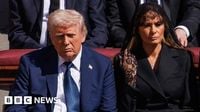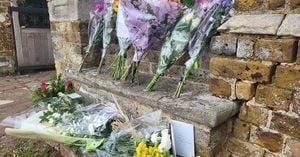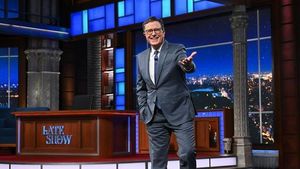On Saturday, April 26, 2025, world leaders gathered in Vatican City for the funeral of Pope Francis, who passed away on April 21 at the age of 88. His death followed a series of health issues, including a five-week hospital stay, from which he was released just over a month prior. Thousands of mourners filled St. Peter’s Square, paying their respects to the beloved pontiff.
The ceremony commenced at 10 a.m. local time and saw over 250,000 attendees, including dignitaries from more than 150 countries. Among the notable figures present were U.S. President Donald Trump, former President Joe Biden, British Prime Minister Keir Starmer, and French President Emmanuel Macron. The open-air mass lasted for just over two hours and was co-celebrated by 220 cardinals and over 4,000 priests.
During the service, Cardinal Giovanni Battista Re praised Pope Francis, stating, "He was a Pope among the people, with an open heart towards everyone." He emphasized the late pontiff's commitment to peace and compassion, especially in a world rife with conflict and suffering. The ceremony featured Latin verses and Gregorian chants, echoing through the piazza as the crowd observed a moment of silence.
Pope Francis’ coffin, a simple wooden structure adorned with a cross, was carried by pallbearers into the square, eliciting applause from the crowd. Prior to the funeral, Trump and Zelensky held a private meeting, marking their first in-person discussion since tensions arose between them in February. Zelensky expressed gratitude for the Pope's prayers for peace in Ukraine, stating, "We remember his prayers for peace in Ukraine. Our state will be represented in Rome at the farewell ceremony this coming Saturday."
As the service unfolded, dignitaries were seated in a carefully arranged manner, with Trump and First Lady Melania Trump sitting in the front row, flanked by Estonia’s President Alar Karis and Finland’s Alexander Stubb. Zelensky sat just ten seats away from Trump, separated by several dignitaries, including Macron. The proximity of these leaders highlighted the delicate nature of international diplomacy at this time.
Among those representing their countries were Prince William, who attended on behalf of King Charles III, and Keir Starmer, who expressed condolences for the Pope's passing, stating, "His leadership in a complex and challenging time for the world and the church was often courageous, yet always came from a place of deep humility." Irish President Michael D. Higgins and Taoiseach Micheál Martin also attended, with Higgins having previously paid tribute to the Pope in Dublin.
Other notable attendees included E.U. Commission President Ursula von der Leyen, who engaged in discussions with Macron, and Javier Milei, the President of Argentina, who expressed his honor in knowing the Pope. Milei had previously announced a week of national mourning in Argentina following the Pope's death.
Italian Prime Minister Giorgia Meloni, who canceled a trip to ensure her attendance, reflected on her friendship with the Pope, stating, "I had the privilege of enjoying his friendship, his advice, his teachings, which never ceased not even during times of trial and suffering." Meanwhile, the Spanish royal family, represented by King Felipe VI and Queen Letizia, also attended, having signed a book of condolences earlier in the week.
The funeral was marked by emotional tributes, including one from Brazilian President Luiz Inácio Lula da Silva, who called the Pope a "voice of compassion and respect." U.N. Secretary-General António Guterres echoed similar sentiments, stating, "He was a transcendent voice for peace, human dignity and social justice."
As the ceremony concluded, Pope Francis’s body was transported to the Basilica of Santa Maria Maggiore for burial, marking a significant departure from tradition as he became the first pope to be buried outside the Vatican in over a century. His coffin, sealed in a single zinc-lined wooden box, will be interred with a simple inscription of his name, "Franciscus," in Latin.
The global outpouring of grief and respect for Pope Francis reflects his unique position within the Catholic Church and the world at large. His efforts to address issues such as climate change, migration, and social justice have left a lasting legacy that will be felt for generations to come. As the world mourns, attention now turns to the future of the papacy and the upcoming conclave to elect his successor, which is expected to begin after May 6, 2025.
In the days following the funeral, the Vatican will observe a nine-day mourning period, allowing the faithful and leaders alike to reflect on the profound impact that Pope Francis had during his twelve-year reign. His commitment to humility, compassion, and inclusivity will be remembered as hallmarks of his papacy, as the Church navigates the challenges of modernity in a rapidly changing world.






